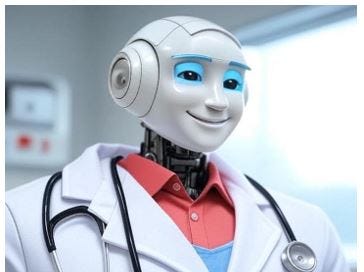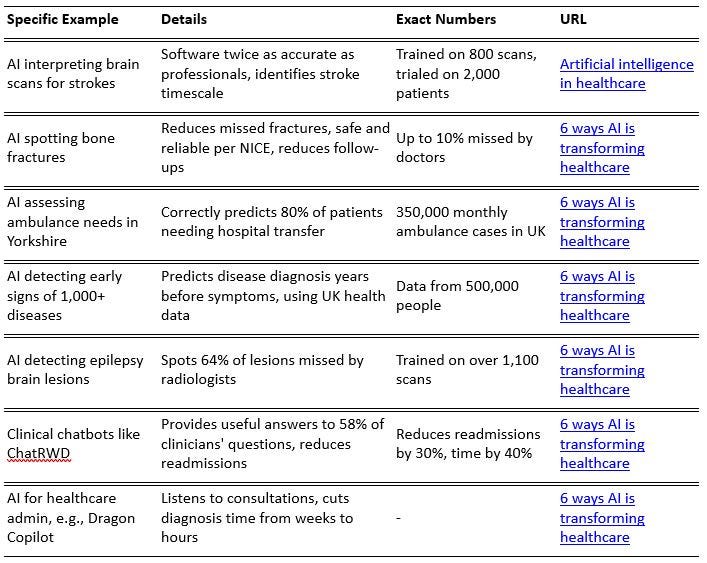Will Your Next Doctor’s Visit Be With AI?
Probably not, but maybe soon.
Advances in AI are growing faster than ants on that hunk of watermelon you dropped at the family picnic.
Now they’re talking about how AI could help in your doctor’s office.
IBM was one of the first AI innovators with its Watson system. Watson was able to analyze medical records, clinical data, and research to suggest potential diagnoses, treatment options, and personalized care plans. For example, Watson for Oncology, developed with the Memorial Sloan Kettering Cancer Center, has been used to assist in cancer diagnosis and treatment planning. It cross-references patient data with medical literature to recommend evidence-based treatment options.
In several real-world cases, Watson was used to review radiology results and scans. Watson was used in the UK’s National Health Service where millions of scans were processed with 94% accuracy.
I’ve added a table1 below of some specific examples of medical AI in practice.
AI has already made inroads in the medical field, although at this time IBM is the only AI tool that’s in general use.
So, in the next 5-10 years what would a typical visit to your doctor look like?
Before your visit, your smartwatch (like the Apple Watch) would monitor your vital signs like blood pressure, temperature, heartrate, etc. This data would be transmitted to your doctor’s AI system.
The AI system would call you and conduct a pre-visit symptom check. This “interview” would be in plain English where the AI would ask you to describe your symptoms in detail. Based upon this call, plus the data supplied by your smartwatch, the AI system could form a preliminary diagnosis.
Although your visit could be virtual by telemedicine, the in-office visit would be a supercharged version of today’s visit.
The data from your smartwatch and the AI interview, along with preliminary AI-generated diagnoses, would be presented to your doctor in the office for his review and diagnosis.
If imaging is required, AI systems such as Watson can analyze X-rays, MRIs or bloodwork instantly. For example, if you have a chest scan, the AI might detect early signs of lung disease with accuracy rivaling that of radiologists.
The doctor might have a humanoid robot like the Tesla Optimus or Hanson Robotics’ Sophia in the office. During the exam the robot could monitor your facial expressions reflecting pain or confusion. It could assist the doctor in place of a nurse or technician. The robot could also translate the doctor’s medical terminology into plain English for you.
After the visit AI could generate tailored follow-up plans, such as medication reminders via an app on your phone or exercise recommendations based on your fitness tracker data. For chronic conditions like diabetes, AI could adjust insulin doses in real-time via connected devices.
Your smartwatch and connected home devices like smart scales or blood pressure cuffs could feed data to AI systems, alerting your doctor to anomalies like a sudden spike in blood pressure. This could trigger automated follow-up calls or virtual check-ins.
* * *
AI can benefit healthcare at the local level. AI and robotics can free up medical staff to alleviate staffing shortages. AI chatbots can provide patients 24 x 7 access to medical information. It can streamline scheduling, billing, and patient record management, thereby reducing staff workload and errors. All of this can take place at a lower cost.
I’m ok with having a robot in the room with my doctor. But a robot doctor? No way José. The last thing I want is a robot with cold metal fingers doing a “turn your head and cough” exam. Not with those long freezing cold fingers. Nooooo way!




